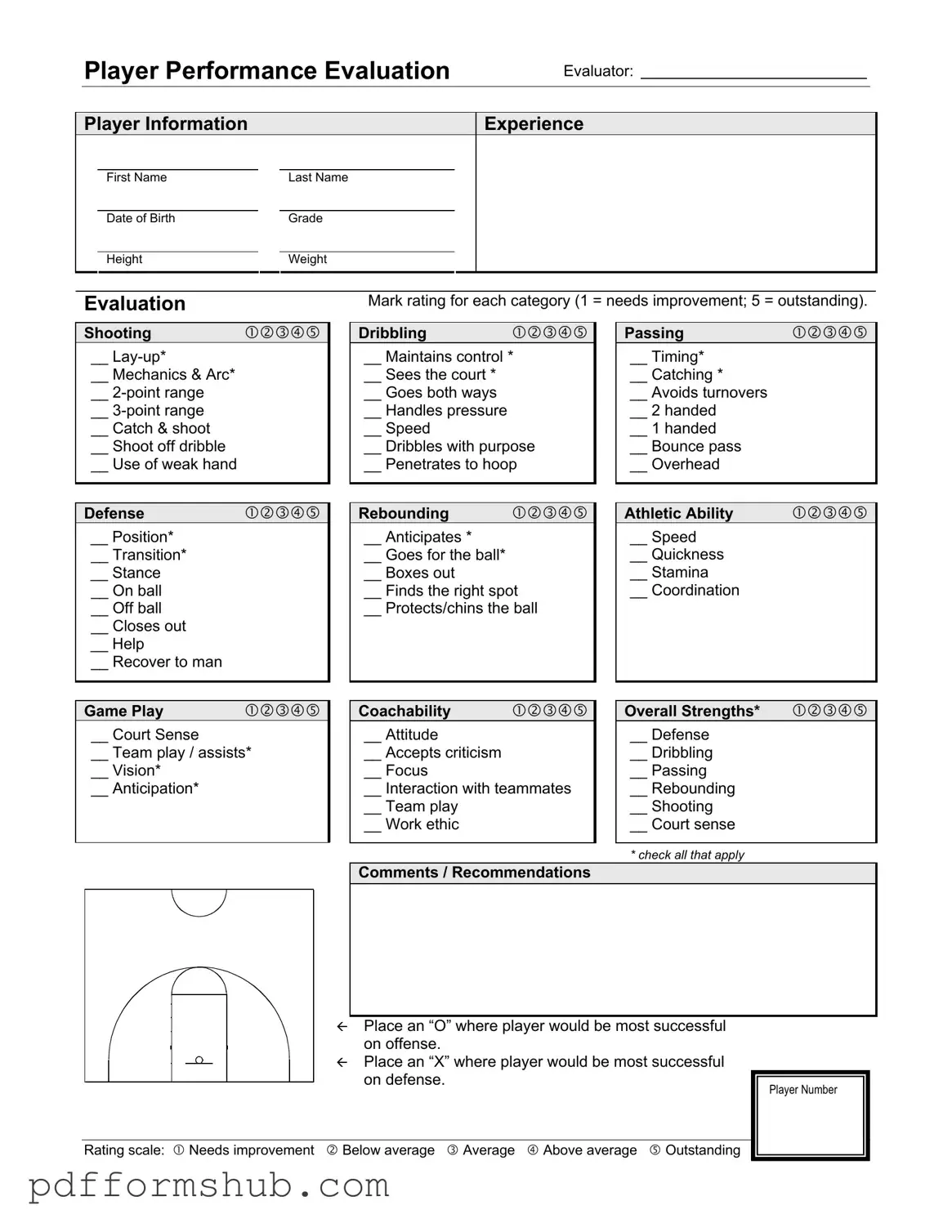The Basketball Evaluation form serves as a comprehensive tool designed to assess a player's skills and overall performance on the court. It encompasses various categories, including shooting, defense, dribbling, rebounding, and passing, each evaluated on a scale from one to five, where one indicates a need for improvement and five signifies outstanding ability. Evaluators begin by gathering essential player information such as name, date of birth, grade, height, and weight, which provides context for the assessment. Each skill category is broken down further; for instance, shooting encompasses lay-ups, mechanics, and shooting off the dribble, while defense evaluates position play, on-ball and off-ball skills, and help defense. Athletic ability is also considered, including speed, quickness, and stamina, which are crucial for overall game performance. The form allows evaluators to note strengths and areas for improvement, fostering a constructive dialogue about the player's development. Additionally, comments and recommendations can be included, offering personalized insights. This structured approach not only aids coaches in tailoring training but also helps players understand their progress and areas needing focus.
